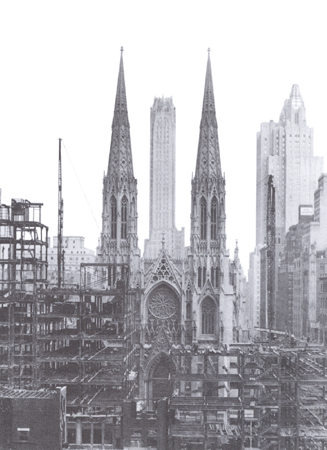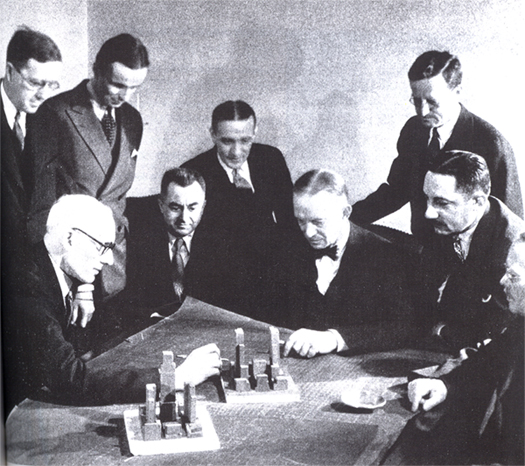|
||
|
Public Contribution in
High-Rise Building Design
|
||
|
@ New York City
|
||
|
Rockefeller
Center : The City within the City
|
||
|
History of Rockefeller Center |
||
|
(continue)
|
||
| The 2 major problems were; | ||
| 1. Architects didn't care much about self-sustain enterprise. It is not easy to combine the beauty and profit in urban design. Rockefeller Center real estate advisor, Charles O. Hyde, suggested to invited John. R. Todd, a successful real estate developer who specialized in keeping architects in line under tight rein. | ||
| 2. Frustrating indecisiveness of the Opera group. No decision to do anything. They had a problem about financial support and requested for more money. | ||
| October 29, 1929 Then "Black Tuesday" came. The stock market crashed. Everything was turn down. In December 6, 1929, New Yorkers read the paper "The project for locating the new opera house on the site offered by Mr. Rockefeller has been abandoned" At this point, he is alone. The opera house was gone and the character of the project was drastically changed except the square to be a legacy of Rockefeller Center. | ||
|
||
| When the development has lost the civic and cultural object. It became completely commercial. At that bad period, the empty space in commercial area of New York was increasing, The Empire State Building were ready to open and Rockefeller were proposing the plan to add 4 million more square feet into the glutted market. Everybody stop but Mr. Rockefeller, with the largest urban commercial development project in the history. There is not rental contract from anybody via Metropolitan Square Corporation. If he will build it by himself, it will be 126$ million or about 1000 Million dollars in contemporary evaluation. | ||
| Instead of stop the project. They decide the make it more luxurious and elegant. To attract the customer in the bad time economics, this project has to comfort, cleanliness, service, fresh air, lights, sparkling views, etc. In this case, if this project can stimulate the country's economic, to neglect quality of the project will be fatal. And too emphasize too much on quantity can be fatal too. To strike the balance between quantity and the quality was the key to success. The design team was set to balance this titanic act. Rockefeller is the one who give the final decision in everything from architecture plans to ornamental designs. | ||
|
||
| The initial development of the project was given to John Todd and 4 Associates. He didn't work with architects well. Also he has a narrow attitude about the space planning. With his position, nobody can argue anything but everybody see that his plan for the center needed to be seriously modified. While the architects was finding the maximum income, luck come to Rockefeller Center as the new industrial empire, Radio Corporation of America (RCA) inform Rockefeller that it is interested in stepping into Opera's Shoes as a principle of Rockefeller Center development. | ||
| RCA also controlled National Broadcasting Company (NBC) which it's 2 net work contain some popular program and Radio-Keith-Orpheum or RKO one of the leading producers and exhibitions for motion pictures. They need prime large amount of office space, large facility for it's NBC studios and least two spectacular RKO theatres on Sixth Ave. And the RCA chairman "David Sarnoff" prepared to pay 4.25 million a year for rent. | ||

